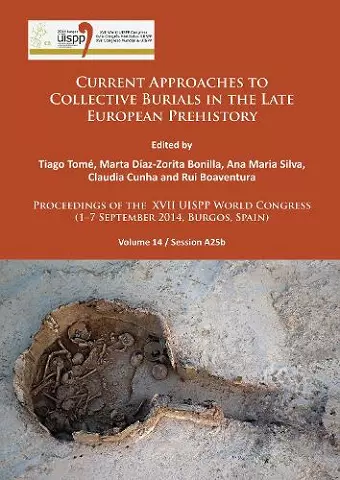Current Approaches to Collective Burials in the Late European Prehistory
Proceedings of the XVII UISPP World Congress (1–7 September 2014, Burgos, Spain) Volume 14/Session A25b
Ana Maria Silva editor Rui Boaventura editor Marta Díaz-Zorita Bonilla editor Tiago Tomé editor Claudia Cunha editor
Format:Paperback
Publisher:Archaeopress
Published:20th Nov '17
Should be back in stock very soon

The present volume originated in session A25b (‘Current Approaches to Collective Burials in the Late European Prehistory’) of the XVII World Congress of the International Union of the Prehistoric and Protohistoric Sciences (UISPP), held in Burgos in September 2014. Collective burials are quite a common feature in Prehistoric Europe, with the gathering of multiple individuals in a shared burial place occurring in different types of burial structures (natural caves, megalithic structures, artificial caves, corbelled-roof tombs, pits, etc.). Such features are generally associated with communities along the agropastoralist transition and fully agricultural societies of the Neolithic and Chalcolithic. For a long time, human skeletal remains exhumed from collective burials were dismissed as valuable sources of information, their studies being limited mostly to morphological assessments and subsequent classification in predefined ‘races’. They currently represent a starting point for diversified, often interdisciplinary, research projects, allowing for a more accurate reconstruction of funerary practices, as well as of palaeobiological and environmental aspects, which are fundamental for the understanding of populations in the Late Prehistory of Europe and of the processes leading to the emergence of agricultural societies in this part of the world. The articles in this volume provide examples of different approaches currently being developed on Prehistoric collective burials of southern Europe, mostly focusing on case studies, but also including contributions of a more methodological scope.
ISBN: 9781784917210
Dimensions: 290mm x 205mm x 6mm
Weight: 530g
142 pages